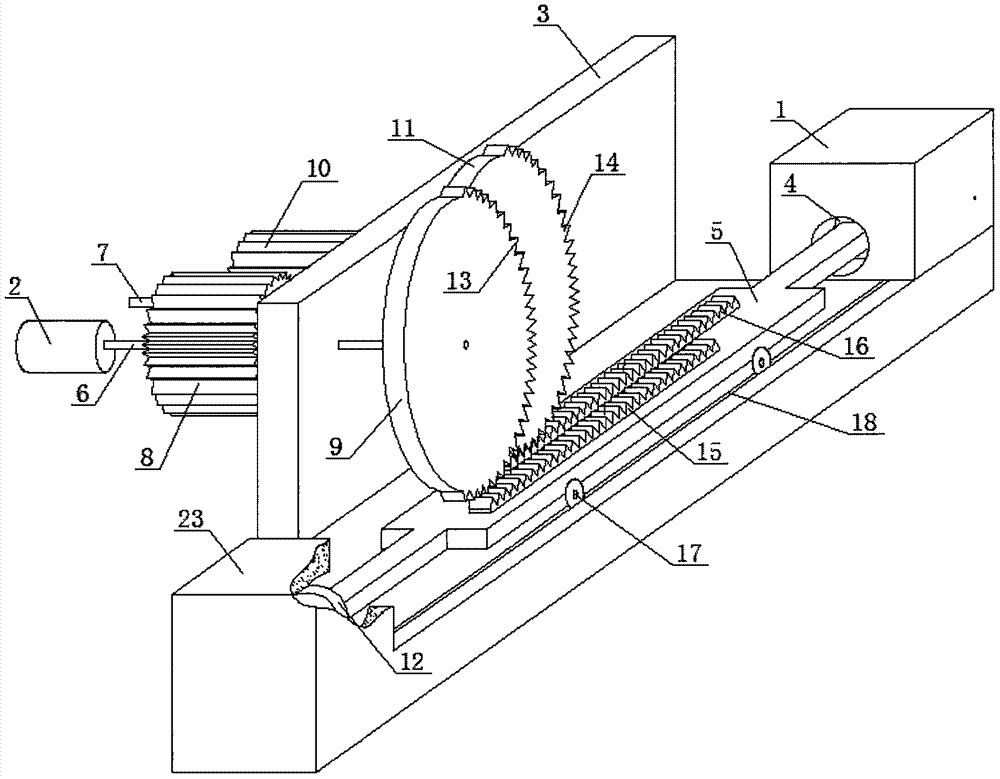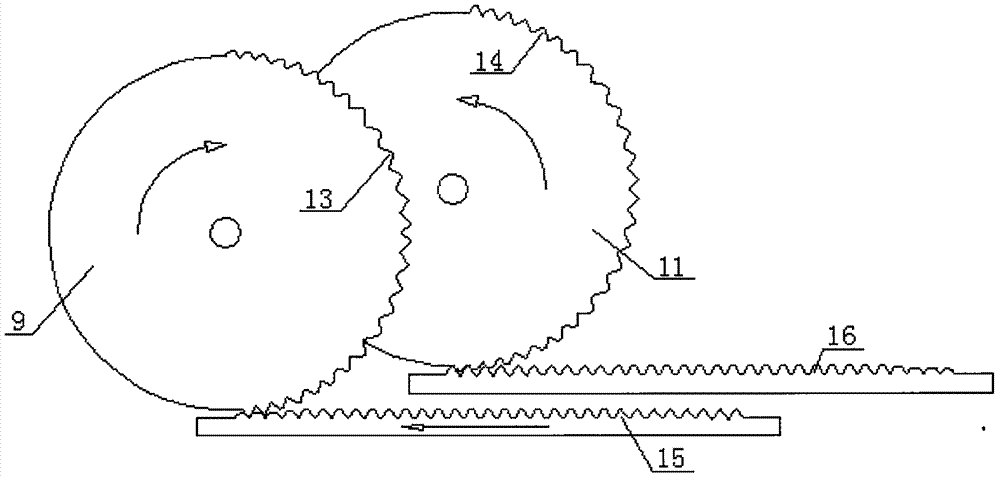Push rod single-oscillating-tooth transmission opposite-column double-cylinder internal combustion engine
A push rod single movable tooth, movable tooth transmission technology, applied in the direction of machines/engines, mechanical equipment, etc., can solve many problems, only part of the output power, the decline of the thermal energy utilization rate of the internal combustion engine, and the low thermal energy utilization rate of the internal combustion engine. Achieve the effect of eliminating eccentric wear phenomenon, simple structure and reducing maintenance cost
- Summary
- Abstract
- Description
- Claims
- Application Information
AI Technical Summary
Problems solved by technology
Method used
Image
Examples
Embodiment 1
[0023] Example as figure 1 As shown, the push rod movable tooth transmission paired twin-cylinder internal combustion engine of the present embodiment includes a cylinder, a transmission shaft 2 and an internal combustion engine body 3, and a piston is arranged in the cylinder. The internal combustion engine body 3 is fixed with a driving shaft 6 and a driven shaft 7 by bearings, and the outer end of the driving shaft 6 fixed on the internal combustion engine body 3 is a transmission shaft 2 . The active rotating shaft 6 is provided with an active toothed disc 8 and an active movable toothed disc 9, and the active rotating shaft 6 between the active toothed disc 8 and the active movable toothed disc 9 is provided with a bearing and is fixed with the internal combustion engine body 3. The driven shaft 7 is provided with a driven toothed disc 10 meshing with the active toothed disc 8 on the active shaft 6, and the driven shaft 7 is provided with a slave toothed disc 9 with the s...
Embodiment 2
[0027] Example two such as Figure 6 As shown, the driven movable toothed disc 11 is provided with a driven movable toothed disc one 19 and a driven movable toothed disc two 20, and the active movable toothed disc 9 is located in the middle of the front ends of the driven movable toothed disc one 19 and the driven movable toothed disc two 20 position; the push rod 5 is provided with a driven push tooth one 21 and a driven push tooth two 22 meshing with the driven movable tooth disc one 19 and the driven movable tooth disc two 20, and the driven push tooth two 22 on the push rod 5 One 21 and driven push tooth two 22 and the driven movable teeth 14 on the driven movable toothed disc one 19 and the driven movable toothed disc two 20 are all equal in number respectively, and the driven movable toothed disc one 19 and driven movable teeth The setting of the second disc 20 can ensure better stability of the push rod 5 when reciprocating. Other settings and principles of this embodi...
PUM
 Login to View More
Login to View More Abstract
Description
Claims
Application Information
 Login to View More
Login to View More - R&D
- Intellectual Property
- Life Sciences
- Materials
- Tech Scout
- Unparalleled Data Quality
- Higher Quality Content
- 60% Fewer Hallucinations
Browse by: Latest US Patents, China's latest patents, Technical Efficacy Thesaurus, Application Domain, Technology Topic, Popular Technical Reports.
© 2025 PatSnap. All rights reserved.Legal|Privacy policy|Modern Slavery Act Transparency Statement|Sitemap|About US| Contact US: help@patsnap.com



